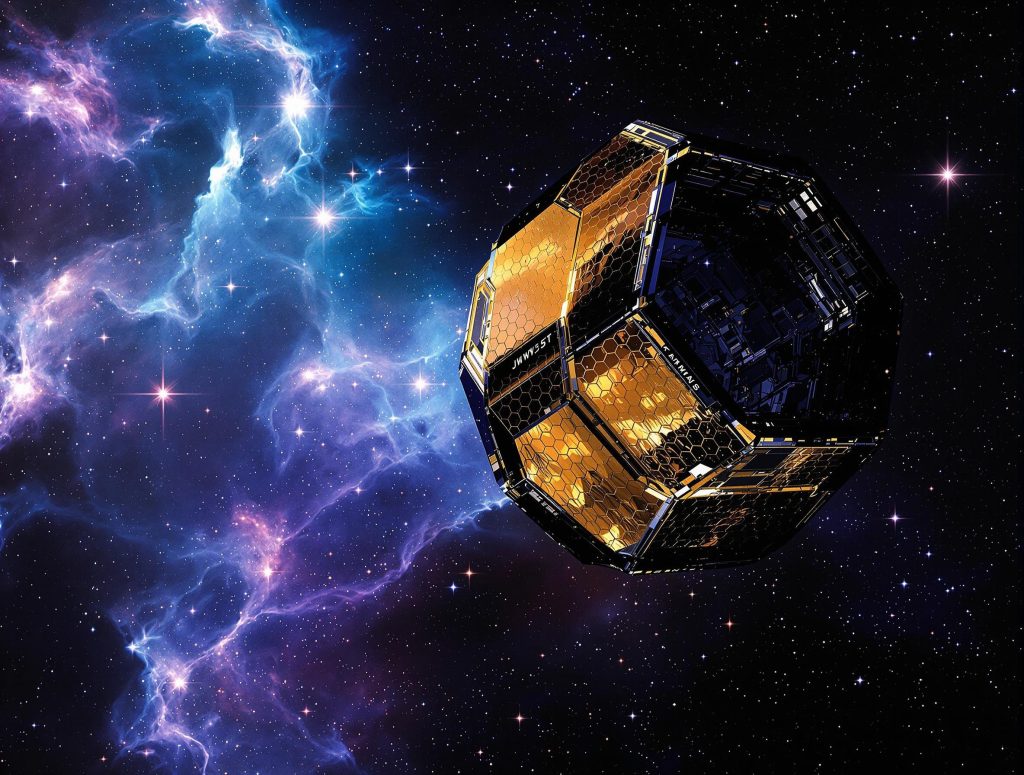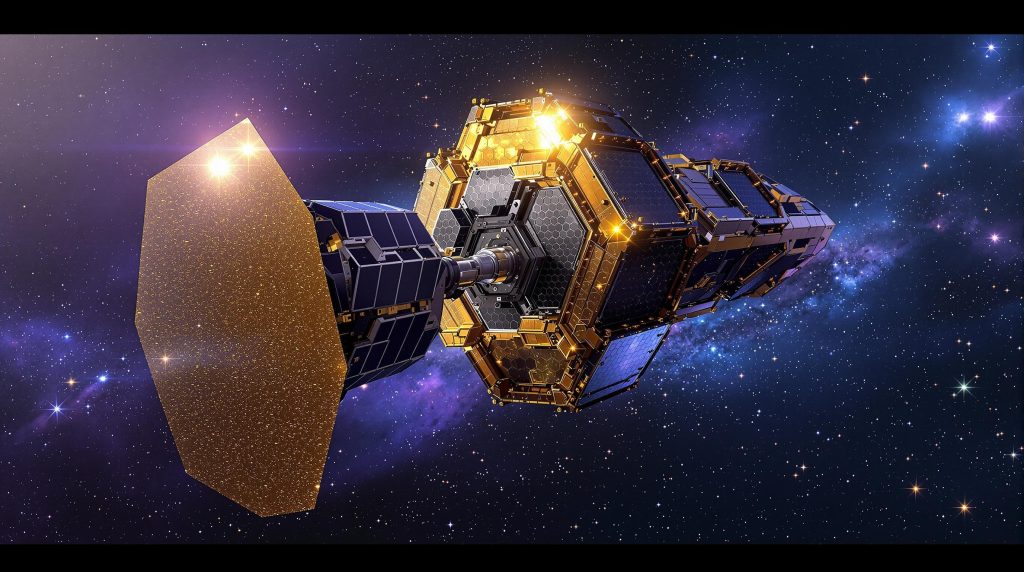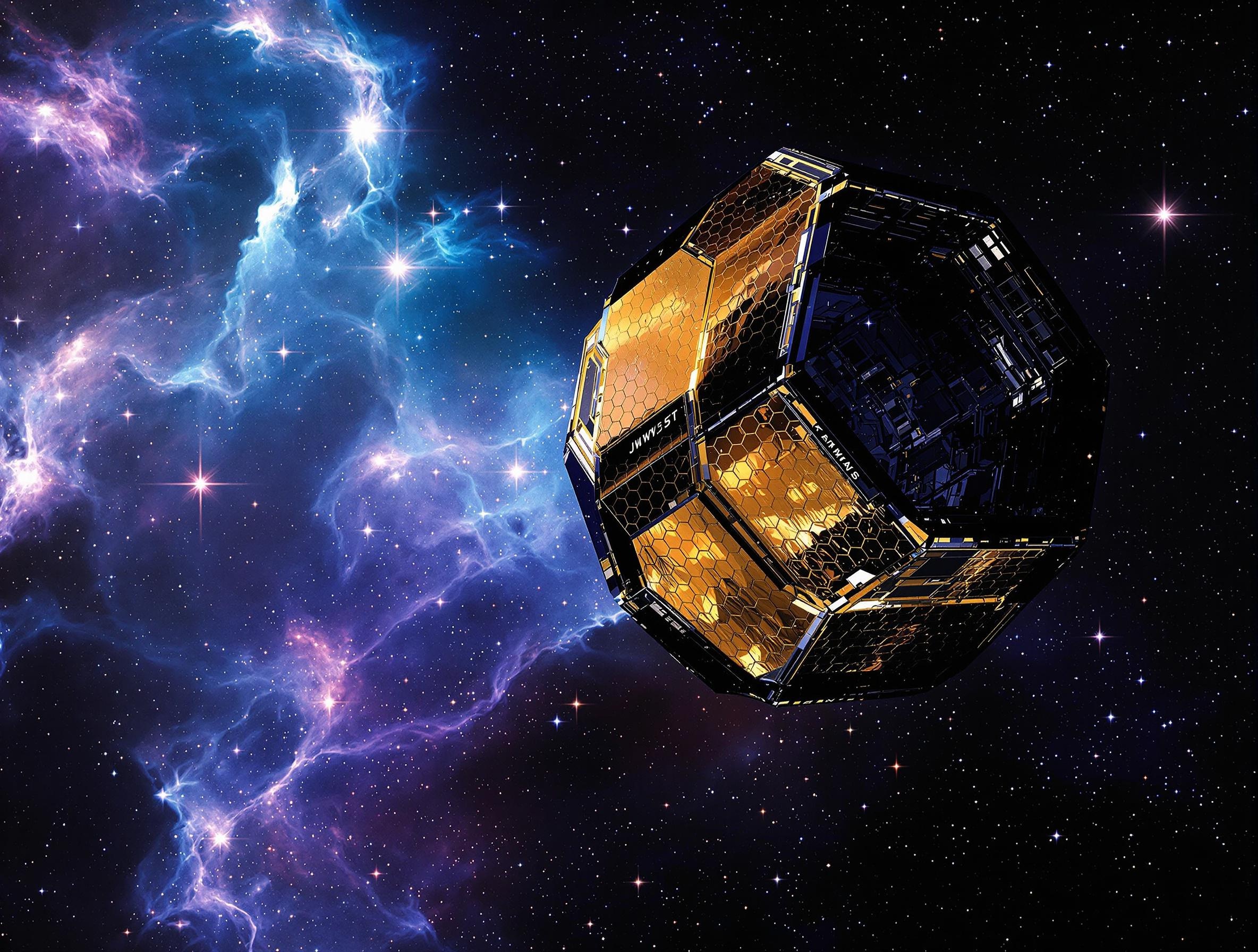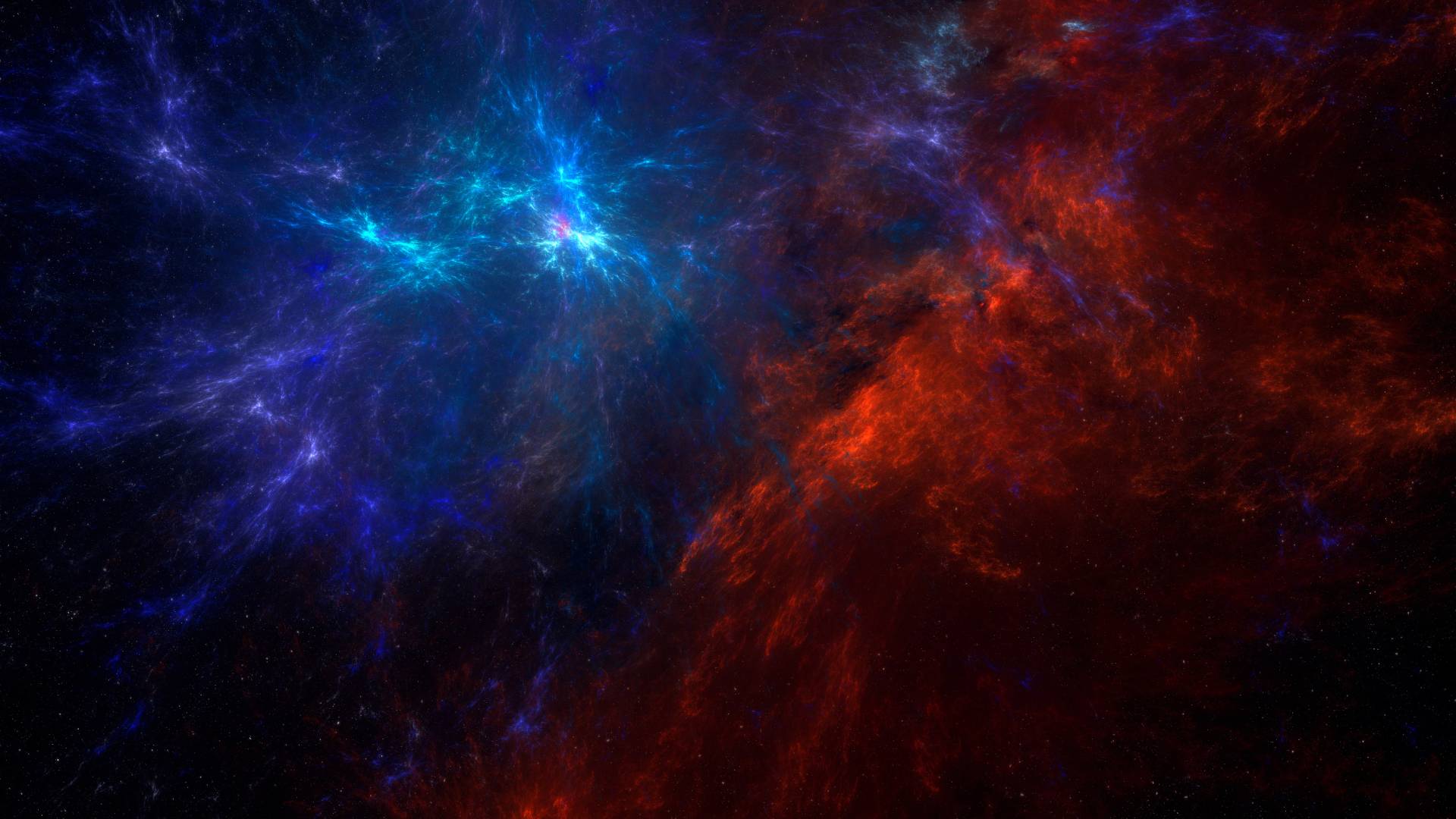The James Webb Space Telescope (JWST) is the most advanced space observatory ever built, designed to unravel the mysteries of the universe. As the successor to the Hubble Space Telescope, JWST is equipped with cutting-edge technology to observe the cosmos in unprecedented detail. But how does this remarkable telescope work? In this article, we’ll explore JWST’s design, instruments, capabilities, and its role in expanding our understanding of space. stay with Spaceyv
The Design of JWST ( James Webb Space Telescope )
Giant Gold-Coated Mirror
One of JWST’s defining features is its massive primary mirror, which measures 6.5 meters (21 feet) in diameter. This mirror is made of 18 hexagonal segments coated with a thin layer of gold, optimizing its ability to reflect infrared light. Unlike Hubble’s single-piece mirror, JWST’s mirror is foldable, allowing it to fit into a rocket for launch and then unfold in space.
Sunshield for Protection
To function properly, JWST must be kept extremely cold. It uses a five-layer sunshield the size of a tennis court to block heat from the Sun, Earth, and Moon. This sunshield is crucial because infrared observations require a near-absolute zero temperature to prevent heat from interfering with the telescope’s sensors.

Infrared Observations
JWST is designed to observe the universe primarily in the infrared spectrum, unlike Hubble, which focuses on visible and ultraviolet light. Infrared light allows JWST to:
- See through cosmic dust clouds to observe star and planet formation.
- Detect faint galaxies from the early universe.
- Study the atmospheres of exoplanets for signs of habitability.
Instruments on James Webb Space Telescope
JWST is equipped with four main scientific instruments that help it analyze infrared light:
1. Near Infrared Camera (NIRCam)
- Detects faint galaxies and young stars.
- Identifies exoplanets orbiting distant stars.
2. Near Infrared Spectrograph (NIRSpec)
- Analyzes the composition of galaxies, stars, and planets.
- Can observe up to 100 objects simultaneously.
3. Mid-Infrared Instrument (MIRI)
- Captures images and spectra at longer infrared wavelengths.
- Helps study cold celestial objects, such as distant planets and protoplanetary disks.
4. Fine Guidance Sensor/Near InfraRed Imager and Slitless Spectrograph (FGS/NIRISS)
- Ensures the telescope stays precisely locked onto its target.
- Detects exoplanets and studies their atmospheres.
How James Webb Space Telescope Observes the Universe
Location: The Lagrange Point (L2)
JWST orbits the Sun-Earth Lagrange Point 2 (L2), approximately 1.5 million kilometers (1 million miles) from Earth. This position keeps it aligned with the Earth’s shadow, reducing temperature fluctuations and interference from sunlight.
Data Collection Process
- Light Collection: The primary mirror captures incoming infrared light and directs it to secondary and tertiary mirrors.
- Signal Processing: The instruments analyze the light, extracting detailed information about cosmic objects.
- Data Transmission: JWST sends data back to Earth via NASA’s Deep Space Network, where scientists process and analyze it.
https://www.youtube.com/watch?v=OG-m_zVGf3w
What James Webb Space Telescope Can Discover
1. The First Galaxies
JWST looks back in time to when the first galaxies formed, providing insight into the evolution of the universe.
2. Exoplanets and Alien Atmospheres
By studying the light passing through exoplanet atmospheres, JWST can detect water vapor, carbon dioxide, and other key elements, potentially identifying planets that could support life.

3. Star and Planet Formation
JWST’s infrared capabilities allow it to see inside dense cosmic dust clouds, revealing how new stars and planets are born.
4. Black Holes and Dark Matter
By examining how light bends around massive objects, JWST helps scientists better understand black holes, dark matter, and the fabric of space-time.
Conclusion
The James Webb Space Telescope is revolutionizing our understanding of the universe. With its infrared vision, massive mirror, and innovative technology, it allows scientists to peer deeper into space than ever before. As JWST continues to uncover new cosmic mysteries, it paves the way for groundbreaking discoveries that may change our perception of the cosmos forever.



